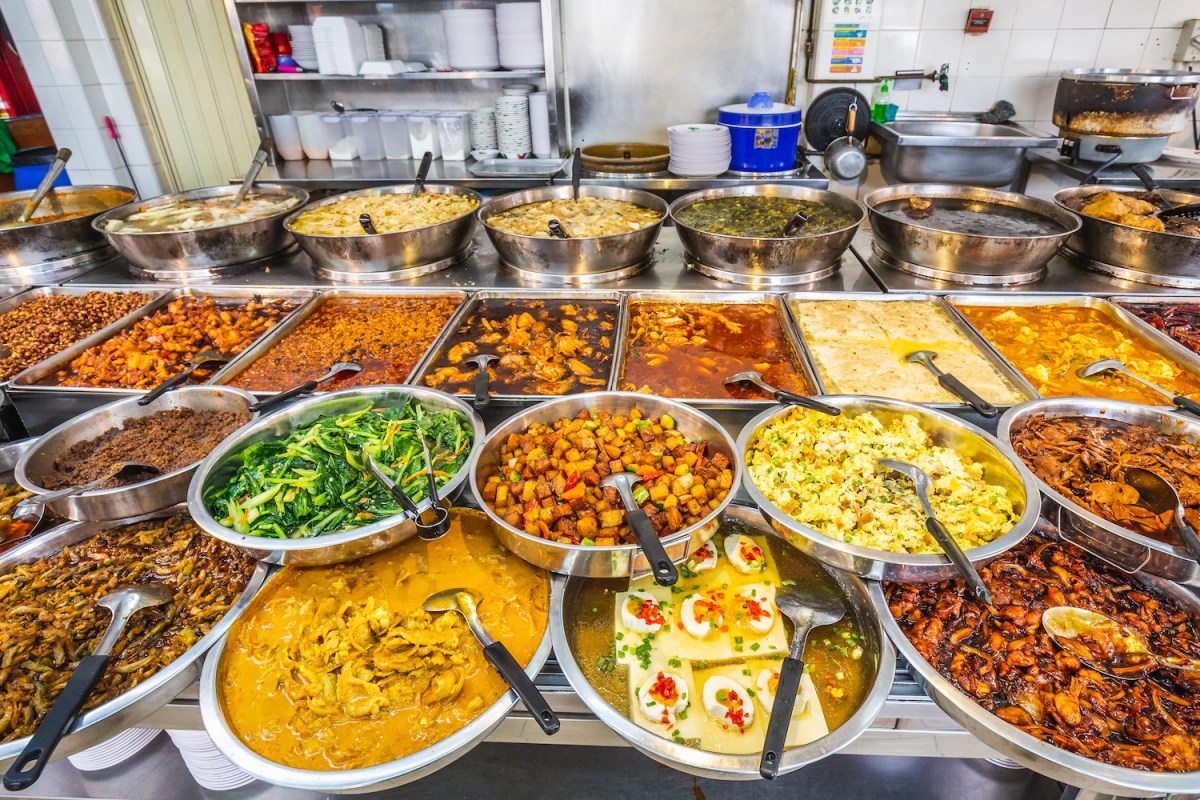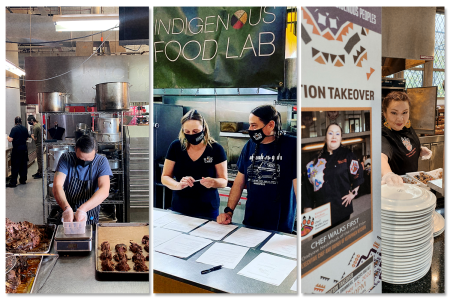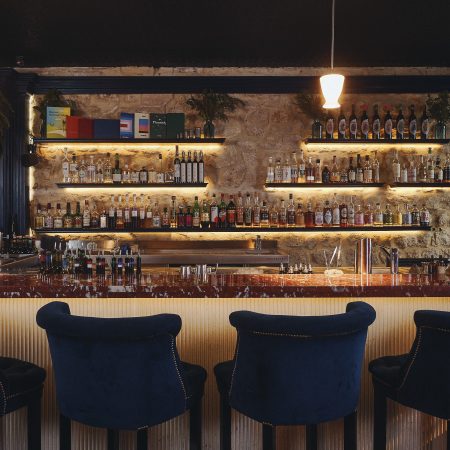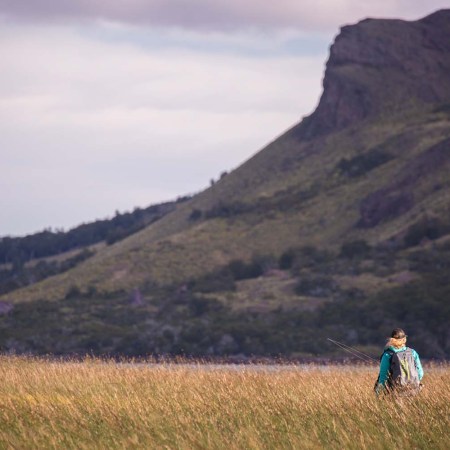At the tail-end of a trip to Tuscany in 2022, I added an Airbnb Experience to go truffle hunting about an hour outside of Florence. I had more than my fill of the region’s food during the two weeks prior, including truffles galore. Yet, I hadn’t seen the preparation of the famous fungi outside of a restaurant, let alone done the hunting myself.
The truffle hunter, it turned out, was a former fine dining chef, and he took our haul and showed us how to use it on handmade gnocchi, with cheese from the dairy farmer next door and even on various desserts. What’s more, he shared stories about how the region’s truffle hunters live and eat. In short, it was insight I wouldn’t be able to find another way, especially not by asking a random Tuscan on the street.
Travelers can find a taste of local cuisine just about anywhere these days. Even cruises — notorious for all-you-can-eat buffets and a sanitized Continental view of dining — offer local food experiences now. Silversea Cruises brought in cookbook author and former editor-in-chief of Food & Wine Italia Laura Lazzaroni for its Sea and Land Taste shore excursion program that focuses on winemakers, chefs and food producers. Oceania’s new Vista ship has more than 50 chef-led culinary tours that take place at its stops.
Still, ask well-traveled people for tips on how to eat like a local in a new place, and you’re likely to hear one piece of advice over all others: ask a local. Which sounds great and straightforward at first, but in practice, not so much. Just try asking the first five people you see in your hometown where to eat. I can’t speak for everyone, but the Chipotle an office worker spends every other lunch break at and the struggling restaurant owned by someone’s uncle aren’t exactly what I’m looking for. Even locals are simply people, and you shouldn’t assume that a random person has that insight just because they live there — just like you wouldn’t assume every person who lives in your hometown is a food expert with a discerning palate.
Though with the right tips, it is possible to immerse yourself in the local food culture and enjoy every last bite.
1. Do Your Research Before You Arrive
One of the joys of being a person who travels for food these days is there’s no shortage of stories that can help guide you. The food media landscape has grown considerably since Anthony Bourdain recommendations were ubiquitous and Jonathan Gold was the sole mainstream voice spotlighting family-run spots in Los Angeles.
Today, you can find stories to inspire your travels here on InsideHook, as well as on other food publications. Some travel agencies also have blogs loaded with helpful information, like Culinary Backstreets. Before I travel, I like to do a destination search on my favorite publications to see what’s been recommended and why.
Most importantly, look to local media. This is often where you find places before they’re swarmed by travelers who read a story in a national publication. Think the food section of the local paper, but even more so the alternative weeklies and start-ups. L.A. Taco has unparalleled food insights to the greater Los Angeles region, while Westword tells the food stories in Denver that you can’t find anywhere else. In smaller cities and regions, there’s still often a local blog, and enough digging will turn up Instagram, YouTube and TikTok accounts with people who actually know what they’re talking about.
Even if you’re already familiar with the classic food styles and dishes of a destination, you likely don’t know it all — like the distinct style of pizza in Marseille, or the Bosnian restaurants and bakeries in Phoenix that came up after refugees resettled in the city in the 1990s and 2000s. The right research can help you find what you didn’t know you should be looking for.
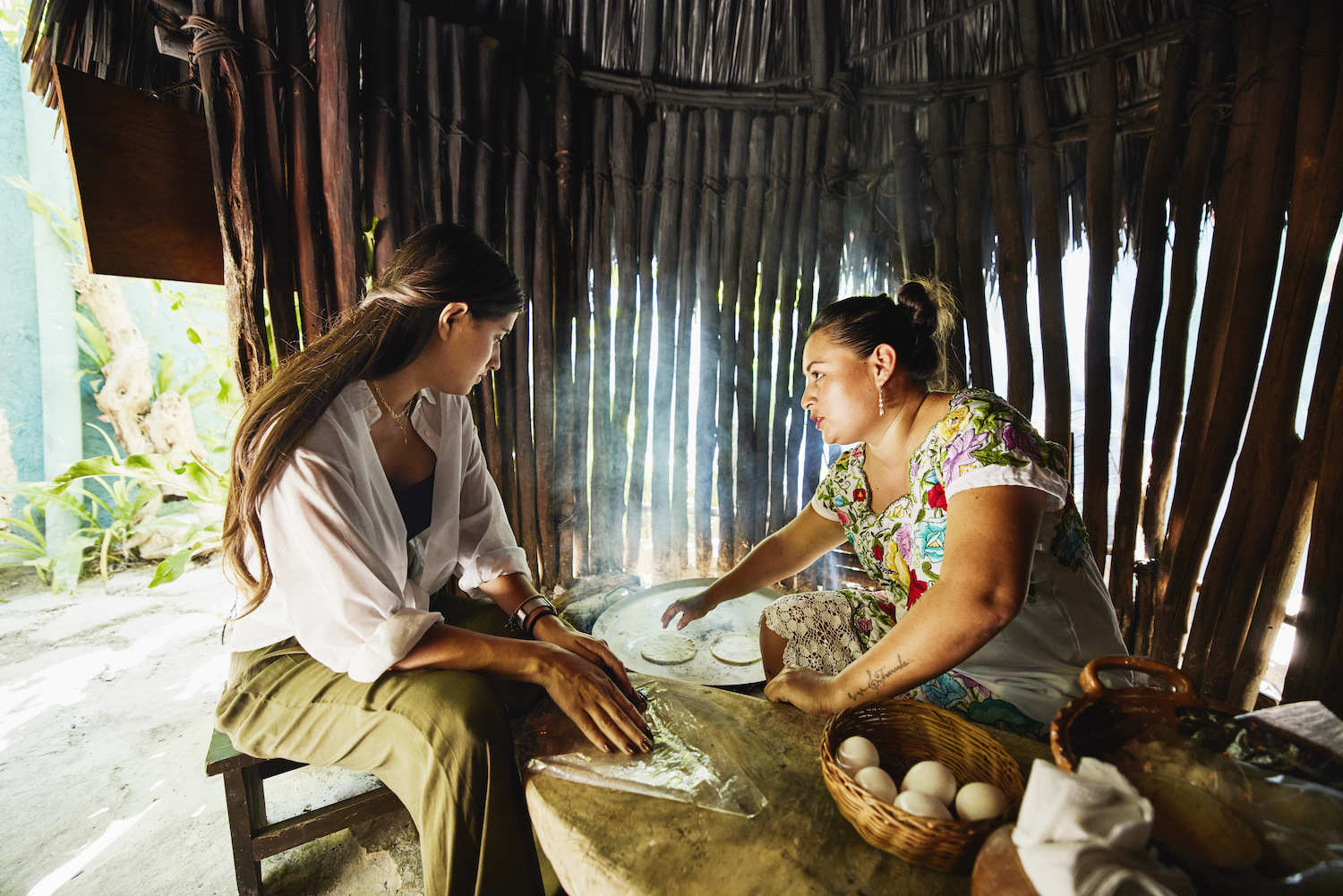
2. Take a Cooking Class
Some of the best food experiences I’ve had while traveling weren’t at highly rated restaurants or popular street food stalls. They’ve been at cooking classes. There’s no shortage of places to find them, from Airbnb to classes set up through your hotel. I’ve learned how to use traditional ingredients at the farm and restaurant Tamarindos near Cabo, and enjoyed the art of Oaxacan cooking in the village of Matadamas from a class on Airbnb Experiences.
Locals eat at restaurants, and restaurants are often the most convenient way to try local food. But more often, locals eat at home using ingredients they love and recipes specific to their background and region. A cooking class shows the other side of a destination’s food scene.
3. Trust a Guide
“Many people think a culinary trip means that they’ll be in back-to-back cooking classes, but food’s reach goes so much further than that,” says Annie Sim, founder and chief eating officer of the small-group, food-focused travel company The Table Less Traveled. Sim’s company arranges cooking classes but also goes a step further with activities like picking ingredients up at markets and walking through family vegetable gardens. “Food is a common language; something we all interact with daily,” she adds. “Exploring through food is a way to connect and learn about each other, our cultures and our traditions.”
Relationships are at the heart of eating like a local when you’re traveling, and guides have built up personal connections over the years that open the door to private homes, kitchens and venues you’d otherwise miss. The travel company PRIOR uses food as a lens by leaning on firsthand knowledge from colleagues in cities around the world.
“This, coupled with the fact that many of us have a background in gastronomy, has awarded us access to an even wider network of food professionals around the globe,” says Laila Said, senior travel designer at PRIOR. “If we’re not based in or as familiar with a particular destination’s culinary culture, we leverage our direct connections with local food authorities such as chefs and food historians to curate highly immersive, high and low experiences that provide juxtaposition and reflect the nuances of a place: from the marchés in Provence and the bustling street taco stands in Mexico City, all the way to small-scale qvevri wine tastings in Georgia and coveted restaurant reservations in Tokyo.”
Where to Eat, Stay and Travel for Authentic Indigenous Experiences
From Minneapolis to Santa Fe, Native American chefs, producers and artists are finally getting their due4. Eat Like a Local by Region
Just because a country is famous for a type of food doesn’t mean you’ll find it in any given town there. Sure, Italy has unbeatable pizza, but if you’re in Tuscany, you’re better off eating pici pasta with wild boar ragu or bistecca alla Fiorentina. The same goes for regions of a city. A collection of the best Chinese restaurants in Seattle is more likely to be found in the city’s famous Chinatown than Pike Place Market. One of my favorite ways to find off-the-beaten-path restaurants is to eat around one neighborhood for a day, rather than spend my limited time getting from one destination to the next.
5. Pay (Wary) Attention to Reviews
User-generated reviews can be both extremely helpful and also the worst advice you ever receive. The very nature of the format is to blame. Sites like TripAdvisor and Yelp have the same problem as asking a random local does. Sure, you get a person’s opinion, but that person might be giving their opinion about the first time they ate ceviche and realized they hate uncooked fish.
That said, reviews on sites like Google Maps can help be a deciding factor. The platform is more likely to have posts and ratings from people who live there, rather than from travelers who parachute in. If you only have time for one more meal and one spot has less than a hundred ratings while the other has thousands, that’s probably a sign. Except for lower-rated extremes (meaning less than three out of five stars), I’ve found that stars matter less than the quantity of reviews. Generally speaking, if a lot of people are going to a place and leaving a review for it, then there’s at least something going for the place.
Photos are also helpful. They’re usually poor quality, and that’s the point. You’re more likely to be served something that looks like that phone snapshot than the doctored image from a professional photographer.
6. Talk to Service Industry Pros
Hotel concierges can point you in the right direction if you speak with them about the restaurants and food you researched. Bartenders know not only the next place you should get a drink, but also the best late-night food spot to hit up afterward. My favorite time to ask is sitting at the bar during an uncrowded happy hour.
Restaurant servers often know others in the industry and can suggest where to eat next. Taxi and Uber drivers can share where they drop people off the most, but also where they go themselves. And when you do ask for a suggestion, ask what to order there, too.
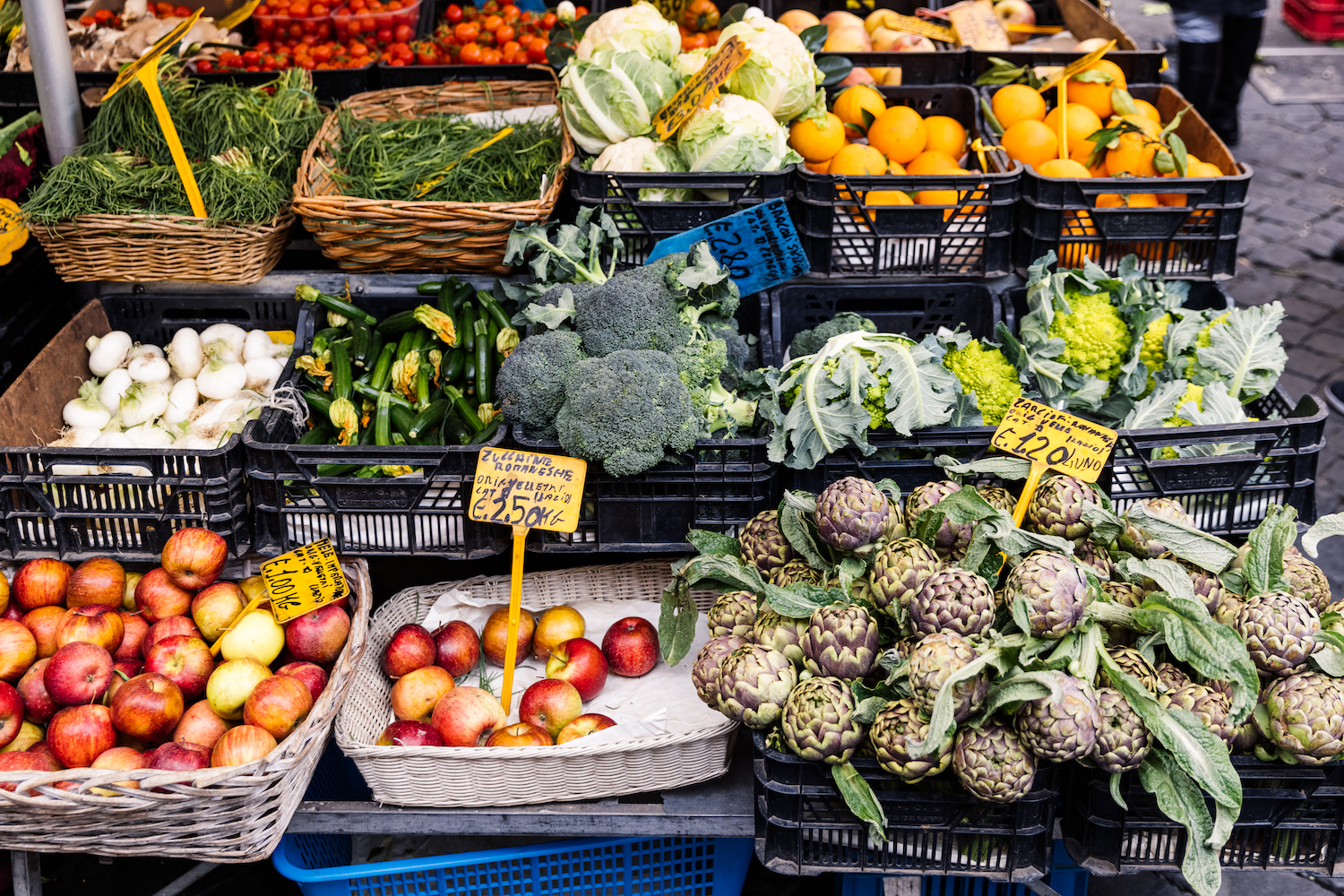
7. Head to the Market
Good food all starts with good ingredients. Look up when the farmers market is or find a small grocer. Not only will you end up leaving with something local and in season to snack on, but you’ll also have the chance to get insight on chefs who do the same. Producers and those who act as the middle person for those producers have an incentive to suggest places that highlight their ingredients best, so you can trust their recommendations.
As with everything in life, part of getting the right answer is asking the right question. “Instead of asking a local where they recommend eating, ask them where they eat,” says Matt Berna, Intrepid Travel’s president and general manager, the Americas. “It’s a subtle difference but can yield different (better!) suggestions and, best case scenario, an invitation to join them for a meal.”
8. Know Your Limitations
Eating like a local isn’t all about where you go and what you eat. Your experience is also defined by the type of traveler you are, and any quest to eat like a local can be derailed if you stray too far outside of what you’re comfortable with. As Sim notes, “there are considerations depending on how you want to interact with local foods and what your risk tolerance is.”
“In some areas of the world, hygiene is not defined or monitored [the same way as in the U.S.], so eating at markets or street stalls may be high risk, and your ability to ‘eat like a local’ may be limited if you’re not willing to take that risk,” Sim says. “In some areas of the world, it is difficult to accommodate dietary restrictions or preferences. In other places, eating like a local may mean having limited food sources or variety. As such, it’s not so much about whether it’s easy or hard to eat like a local, but more about whether you personally are willing and able to adapt to their practices.”
Join America's Fastest Growing Spirits Newsletter THE SPILL. Unlock all the reviews, recipes and revelry — and get 15% off award-winning La Tierra de Acre Mezcal.
